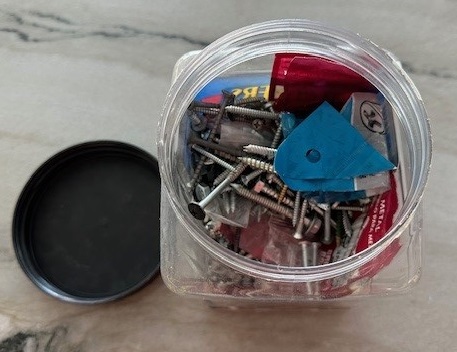Screws are essential fasteners used in construction, woodworking, and various DIY projects to join materials together securely. Characterized by their helical ridges, known as threads, screws are designed to be driven into materials, creating a firm and lasting hold. They come in various sizes, shapes, and materials, making them versatile for different applications.
History of Screws
The history of screws dates back to ancient times, with early examples found in the Mediterranean region around 200 BC. Initially used in presses for extracting olive oil and wine, screws evolved over centuries. The industrial revolution in the 18th century marked a significant advancement in screw manufacturing, with the invention of machinery that allowed for mass production. This innovation made screws more accessible and affordable, leading to their widespread use in various industries.
Types of Screws
- Wood Screws
- Machine Screws
- Sheet Metal Screws
- Drywall Screws
- Deck Screws
- Lag Screws
- Masonry Screws
- Self-Tapping Screws
- Set Screws
- Security Screws
Key Features of Screws
- Thread Design: Determines the screw’s grip and holding power.
- Head Type: Shapes like flat, round, or pan heads serve different purposes.
- Drive Type: Includes slotted, Phillips, and hex drives, each requiring specific tools.
- Material: Screws are made from various materials, including steel, brass, and stainless steel.
- Coating: Often coated to resist corrosion or enhance durability.
Choosing the Right Screw
Choosing the right screw depends on the materials you’re working with, the environment, and the specific application. For instance, wood screws are ideal for woodworking projects, while machine screws are better suited for metal. Additionally, consider the screw length and gauge to ensure it can handle the load and provide a secure hold.
Proper Use and Techniques
Proper use of screws involves selecting the right drill bit, pre-drilling pilot holes to prevent material splitting, and applying consistent pressure while driving the screw. For a secure hold, drive screws straight into the material without over-tightening, which can strip the threads or damage the screw head.
Maintenance and Care
Screws require minimal maintenance but should be checked periodically for tightness, especially in applications subject to vibrations. Rust or corrosion can be prevented by using screws with appropriate coatings or by applying a rust inhibitor. In cases where screws need to be removed, ensure you use the correct tools to avoid damaging the screw head or the material.
Storage Solutions
A great way to store your screws together is using a tools organizer. They usually come in plastic and have a lid that lifts up with many different compartments. Some are double sided and they usually allow you to customize the number and size of the storage compartments.
Pro Tip: Save your old nut containers, mayonnaise jars, or other clear plastic containers that have a large removable lid. These make great storage containers for screws. I toss any extra screws that are left over into this container and they come in handy for various DIY projects.

Safety Tips
Safety is paramount when working with screws. Always wear safety glasses to protect your eyes from debris when drilling or driving screws. Use the correct screwdriver or drill bit to prevent slippage, which can lead to injury. Additionally, handle sharp screws carefully to avoid cuts, and keep your workspace organized to minimize accidents.
Conclusion
Screws are a versatile and indispensable component in DIY projects and construction. Understanding the different types, proper use, and safety measures ensures that your projects are secure and durable. Whether you’re assembling furniture, constructing a deck, or hanging drywall, selecting the right screw and using it correctly is key to success.


